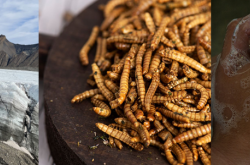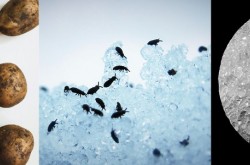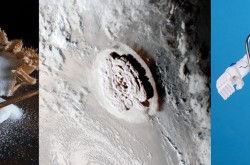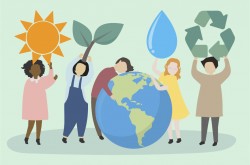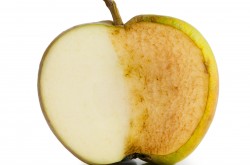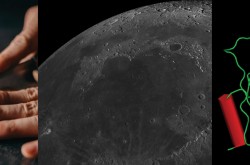2 things you should know about how grape diversity could help save winemaking in Canada and how conservators use an x-ray fluorescence spectrometer to uncover and analyze the materials in the collection's artifacts

Meet Renée-Claude Goulet and Jacqueline Riddle. Renée-Claude is the Science Advisor at Ingenium’s Canada Agriculture and Food Museum, and Jacqueline is a Conservator at Ingenium. In November’s edition of this colourful monthly blog, Renée-Claude explains how climate change is affecting agriculture all over the world, including the growing of grapes and the making of wine, and Jacqueline describes how she and her colleagues use x-ray fluorescence spectrometer technology to discover which chemical elements are present in the materials in the collection's artifacts.
Opening our palates to grape diversity could help save winemaking
Climate change is affecting agriculture all over the world, and it doesn’t stop at food. It’s also becoming harder to produce what’s in our glasses, and that includes wine.
With our 638 wineries, and 1907 grape growers, Canada still only produces about one percent of the wine in the world. While our wine industry is continuously growing, just like other wine producing regions of the world, its sustainability is threatened by the extreme weather effects of climate change such as unseasonable cold snaps or high temperatures, droughts, heavy rains, and damaging winds. Climate change also can increase how plant diseases are affecting our crops. But, by tapping into the hidden genetic diversity of grapes, we could stay ahead of the curve, and save our wine.
Grapes don’t like the cold. Today, Canada’s primary wine growing regions are the Niagara Peninsula and the Okanagan Valley (because they are milder), as well as Quebec, and Nova Scotia. Climate, soil type, and proximity to bodies of water all affect how different grape varieties grow and ripen, and thus, the quality of wine they produce.

Bin containers full of pinot noir grapes at a winery in the Okanagan Valley, British Columbia.
Up until the late 1980s, grapes grown in Canada were hybrids, developed through breeding programs earlier in the century from native vines of the species Vitis labrusca. They didn’t make very good wines, but the vines were able to survive our harsh winters. Through different political and social changes, demand for high quality wine began to rise quickly, and one way to meet this was to start to grow grapes proven to make good wine, varieties belonging to the Vitis vinifera species, from cool climate growing zones of Europe. Examples of European grape varieties that can grow well here are pinot noir, gamay, merlot, sauvignon blanc, riesling, and chardonnay.
This led to a reduction in growing area of the lower quality varieties from the Vitis labrusca species. Though we are now making good wine, the Vitis vinifera species which dominates our vineyards is more vulnerable to bad weather and harsh winters, and is under severe pressure from pest and disease such a mildew.
Our wine industry is also expanding due to breeding programs that continue to create new crosses of European and native species to make grapevines adapted to our long and cold winters. This means some more northerly regions where it was impossible to grow wine grapes can now get into the game and produce their own special wines.
One of the factors making grapes more vulnerable to disease and extreme climates is the limited genetic diversity of what we are growing. This is because to maintain a grape variety, it needs to be reproduced through cloning, or cuttings. This means all vines are almost genetically identical. If a particular variety is vulnerable to a pest or disease, and this pest becomes more common in the environment, all plants can be ravaged. When there is diversity, losses are less devastating because some plants could have better natural resistance. Since we are mostly growing the same varieties that have been maintained for centuries, our old, trusted varieties are not adapted to the variability climate change is throwing at them, causing big losses of yields and vines.
But there is hope. Studies show that there is a lot of hidden genetic diversity between grape species, and between their varieties. This means, through breeding efforts, we can cross species and varieties to give us better ones, which can resist problematic diseases and pests and are better adapted to survive harsher climates; but they can still deliver on the flavours and quality we expect from old classics.
There are some breeding programs looking at using more advanced technologies such as CRISPR gene editing to make changes in popular varieties without needing to cross multiple parents. This avoids changing a variety too much by introducing genes we don't really want.
Though breeding efforts are ongoing, the challenge in climate adaptation of our wine industry is grower and consumer acceptance. Wine is one of those products where name recognition is sought after, and a whole industry exists around its appreciation. Additionally, growers are heavily invested in what they have growing already, so adoption of new varieties takes a long time and is not necessarily financially appealing.
But, for the long-term sustainability of our wine industries, we as consumers could play a part simply by opening our palates to new flavours and opening our minds to lesser-known grapes!
By: Renée-Claude Goulet
Ingenium’s new x-ray fluorescence spectrometer
In a previous 3 Things article , I discussed how conservators use “superhero” vision, including x-ray vision, to see inside, up close, and through artifacts. But did you know that x-rays also help conservators identify the materials and chemical composition of artifacts in their collections?

Conservator Jacqueline Riddle analysing an artifact using Ingenium’s portable XRF spectrometer.
In the Ingenium Conservation Lab, we recently started using a portable x-ray fluorescence spectrometer—XRF for short—for artifact analysis. The XRF is a powerful tool that can tell us which chemical elements are present in a material. It is accurate for all elements heavier than lithium (Li) and lighter than uranium (U) on the periodic table.
XRF works by bombarding a material with x-rays, causing the material to fluoresce and produce secondary x-rays. These secondary X-rays are unique to each chemical element, acting as a “fingerprint” to identify what something is made of. Long story short – we can zap an artifact with our XRF and know definitively whether it is real or fake gold, whether a plastic has lead or cadmium in it, or what type of stainless steel it is.
This technique is great for a few reasons for analysing museum artifacts. It is non-destructive, meaning that we can use it without harming the artifact in any way. It is also quick, providing data within minutes. To top it off, we think it looks like a Star Trek phaser, which speaks to our inner nerds and just generally makes us feel badass while using it.

Conservators analysed this AEL Microtel computer terminal using a portable XRF spectrometer, and determined that bromine is present in the plastic housing to provide fire resistance (Artifact no. 1988.0274 ).
One of the coolest things we have seen so far with our portable XRF is the presence of bromine (Br) in the plastic housing of this AEL Microtel Telidon graphics decoder computer terminal. Bromine was historically added to plastics to increase fire resistance. Old computers could get pretty hot, so it makes sense that brominated plastic would be used to construct them. Brominated plastics yellow quickly over time, so confirming the presence of bromine helps conservators develop long-term preservation plans for these types of artifacts.
XRF has proven to be a valuable analytical tool and it is used in many contexts and industrial settings for studying elements and substances. Here in the Conservation Lab at Ingenium, we are fortunate to have this useful technology at hand as we work with the collection to discover and unlock the secrets of our artifacts that the human eye alone cannot see.
GO FURTHER:
Learn more about XRF here.
Ingenium staff were required to pass exams with Natural Resources Canada’s (NRCan) National Non-Destructive Testing Certification Body to ensure safe instrument operation. Learn more about the NRCan X-Ray Fluorescence Analyzer Operator Certification here.
Want a different perspective on the periodic table of the elements? Check out this 3D periodic table in the Ingenium collection.
By: Jacqueline Riddle
Enjoying the Ingenium Channel? Help us improve your experience with a short survey!
















